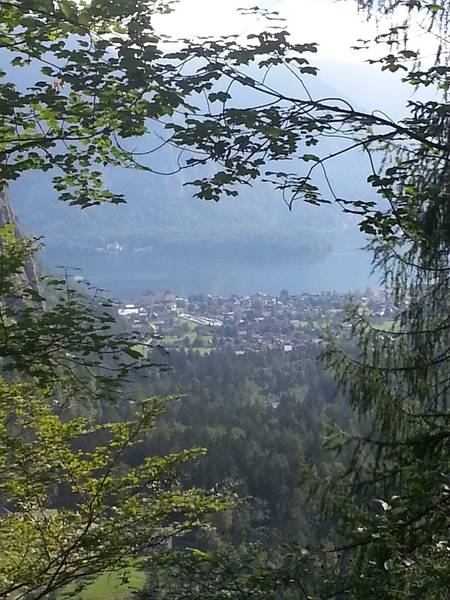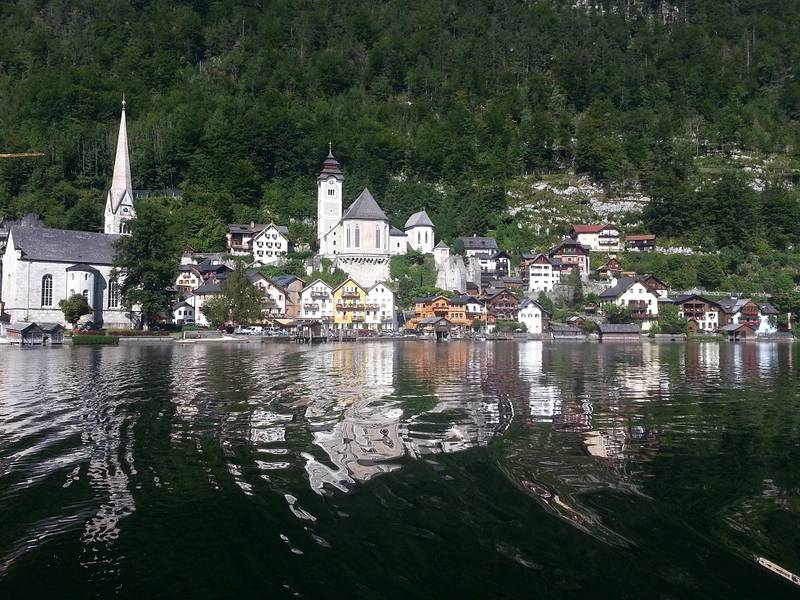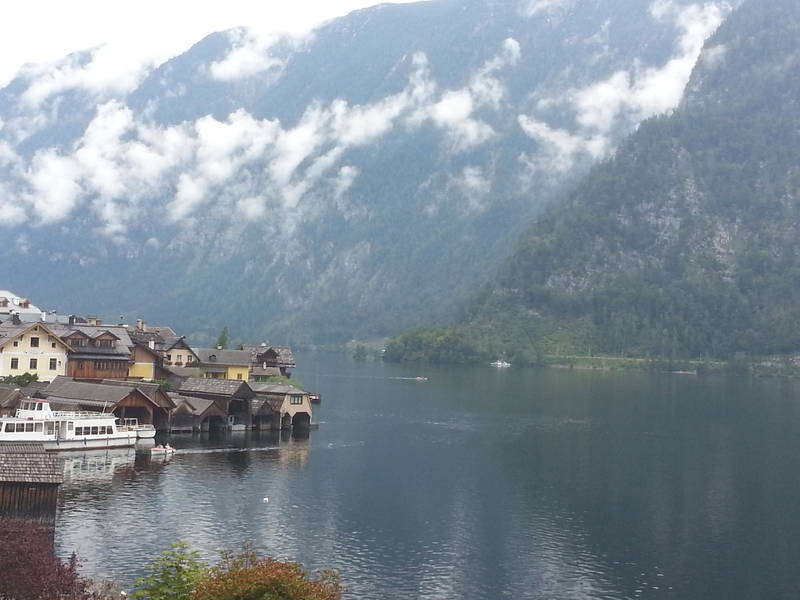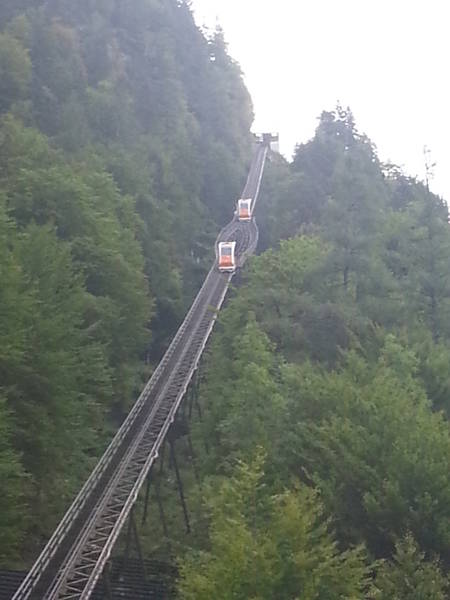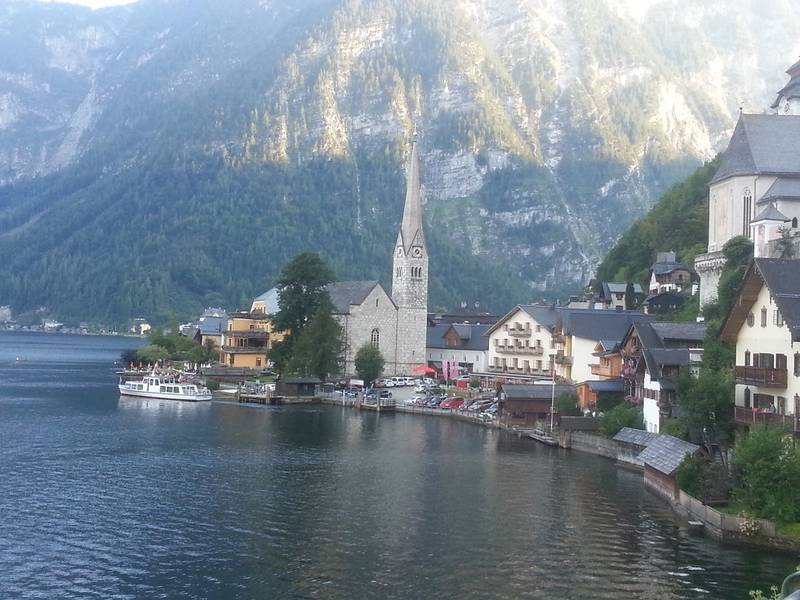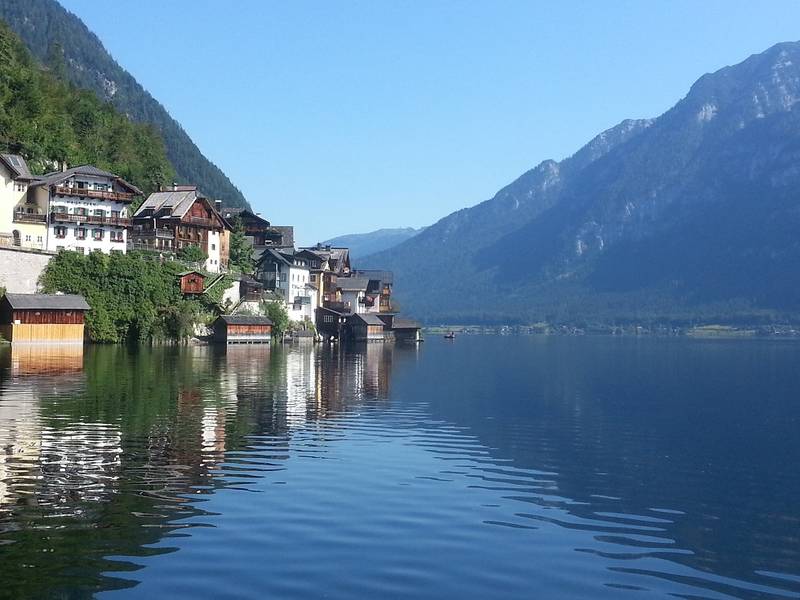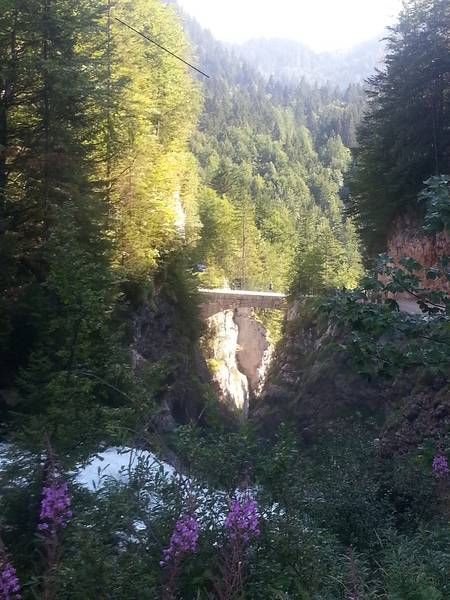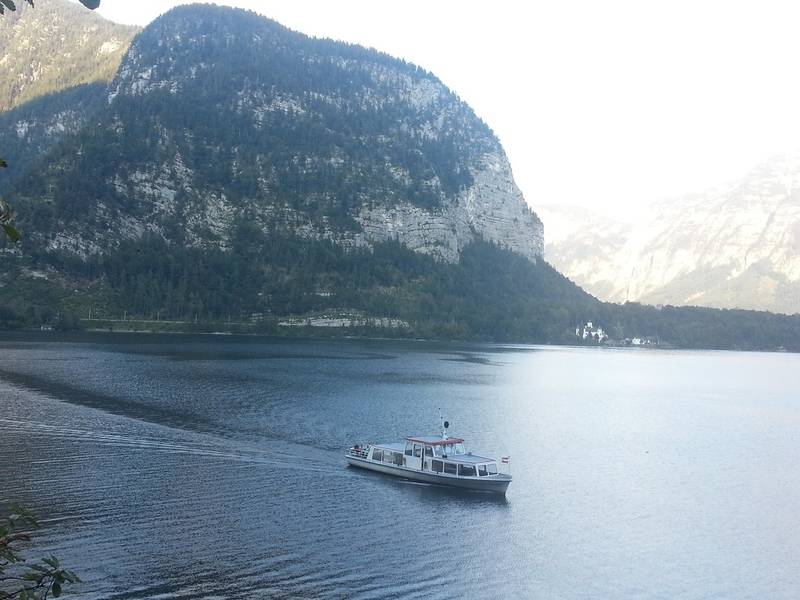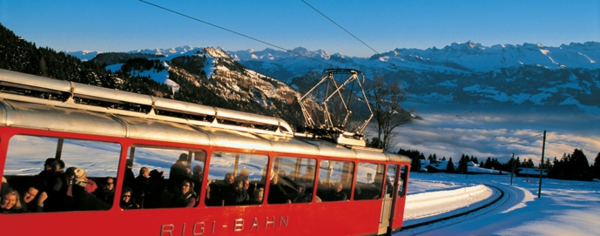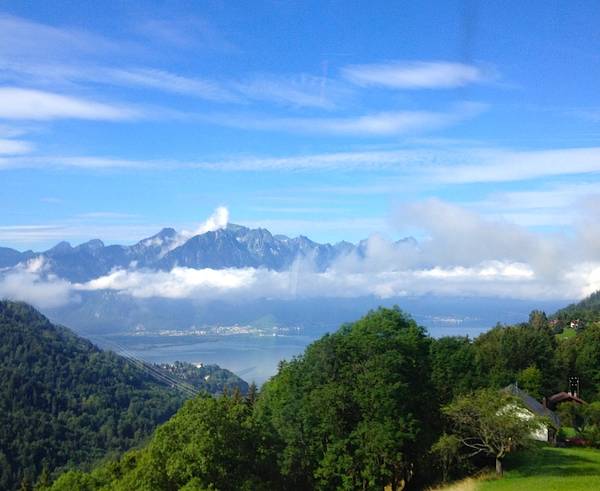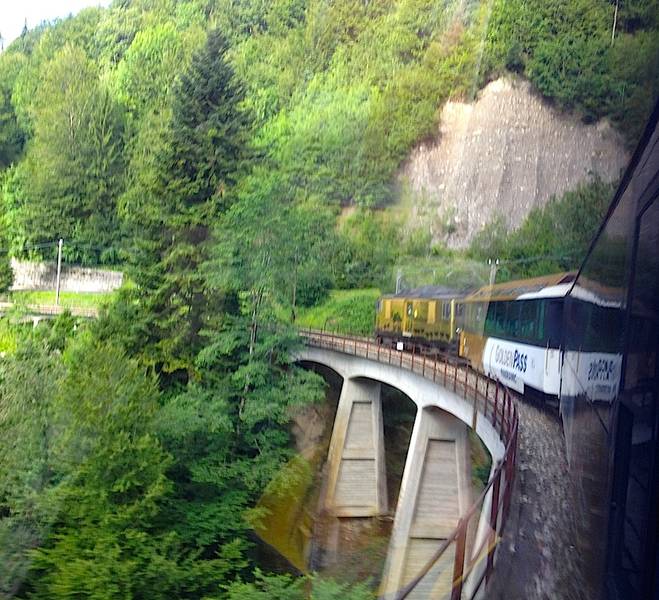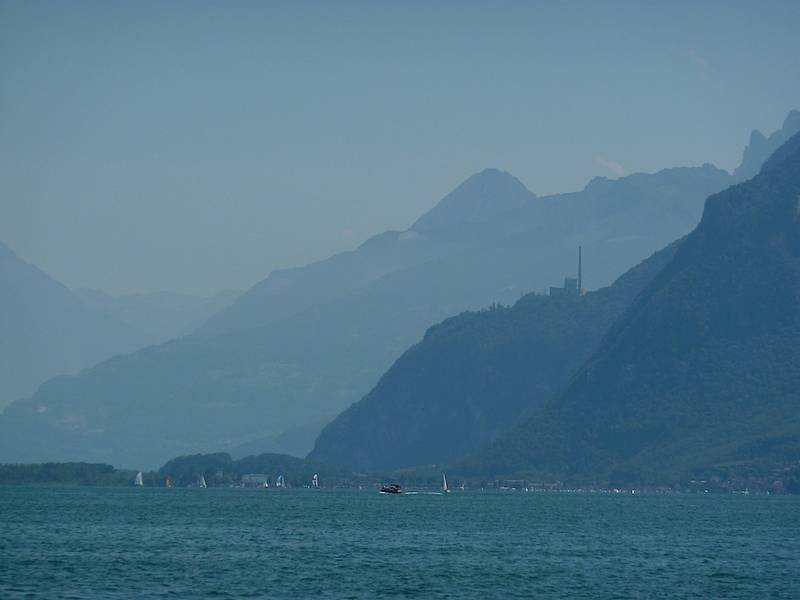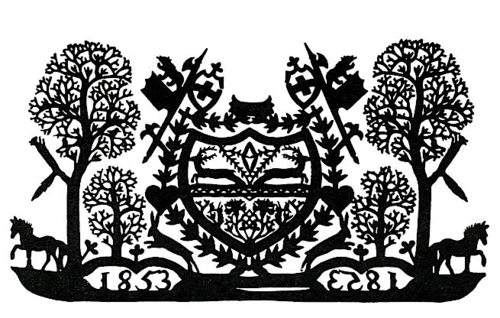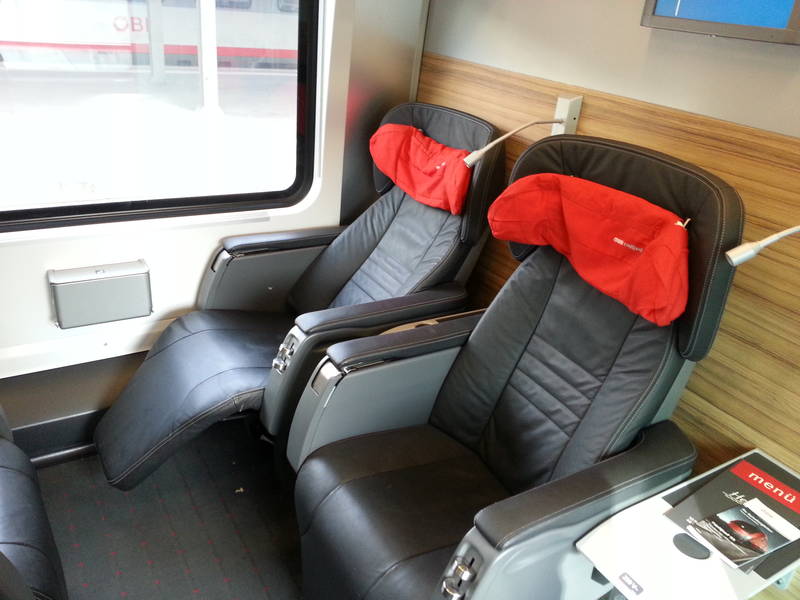Mark Dudgeon, Blue Guides’ rail expert, takes advantage of the summer weather to visit the Salzkammergut region of Austria.
Budapest’s Keleti railway station on a Thursday morning in late August: the migrant crisis overwhelming Europe is on stark display here. On the subterranean level, masses of hapless refugees calmly mill around or lie down in their family groupings waiting for something to happen, somewhere to go.
A rail journey to Austria would normally start here: Railjets run towards Vienna at two-hourly intervals in the daytime. But today, instead, a sharpish flit over to Kelenföld station – in the southern Buda suburbs – is required, to catch the early morning train from Debrecen (in the east of Hungary) towards Vienna. This train does not reach Keleti, the main international station in Budapest, but instead skirts through the city’s southern fringes, stopping at a couple of suburban stations en route.
The train arrives on time and is very busy, for it’s the start of a long holiday weekend in Hungary. Surprisingly, it’s not a Hungarian or Austrian train which rolls up, but a Polish trainset. On board, breakfast in the Polish dining car – an advantage on this train over the newer Railjets, which only have a cramped bistro section – makes the journey pass by very comfortably. At Vienna’s Westbahnhof station, there is more evidence of the migrant crisis. Two platforms are cordoned off and a group of around a hundred refugees is sitting patiently, cross-legged, in the middle, surrounded by police. Then a further contingent of a dozen or so police officers arrives and escorts them away.
From Vienna, the next stage of the journey proceeds westwards on the Austrian main east-west axis towards Salzburg, but only as far as Attnang-Puchheim, reached about 3 hours after leaving Vienna. This journey is operated using an OeBB (Austrian Railways) inter-city train, made up of refurbished early-1990s carriages, which used to be the mainstay of Austrian long-distance rail travel until the introduction of the Railjets a few years ago. OeBB has kept these trains in excellent condition, and many consider them to be more comfortable than the Railjets, having more legroom and feeling less cramped, with a mixture of traditional compartment and open-plan seating.
The scenery so far has been pleasant, rather than spectacular, but thing soon change on the Salzkammergutbahn, part of which runs from Attnang-Puchheim, for a distance of about 60 miles southwards and then eastwards, to Stainach-Irdning on the Graz-Innsbruck line. Now travel is on a regional express train, and about fifteen minutes after leaving Attnang-Puchheim, the train arrives at the first major station on the single-track line, Gmunden, which is at the northern tip of Traunsee, the second largest lake in this area. The lake is unfortunately not yet visible from the railway, since the station lies some way out of the town. The station is linked with the lakeside by the Gmunden Tramway, which, although short (less than a mile-and-a-half long) is the oldest tramway still operating in Austria. From the lakeside square in the centre of Gmunden, the full expanse of the eight-mile long lake unfolds, with the mountains providing a splendid backdrop to the south and east, whilst on the western side of the lake, just south of the town, lies the striking Schloss Ort, a castle with origins in the eleventh century.
Back on the railway, after another ten minutes, the lakeside is reached just before the station at Traunkirchen, and the train continues along the lake’s western shore all the way to its southern end at Ebensee. Traunsee is a popular lake for water sports, particularly sailing and water-skiing – and on any summer’s day the view from the train is of a lake dotted with the sails of yachts. The railway line then bears south-westwards along the banks of the River Traun, for about ten miles, until it reaches the town of Bad Ischl.
Bad Ischl lies at the centre of the Salzkammergut region, Austria’s lake district, and while being a significant tourist base, it does not at all project the feeling of being overwhelmed by tourism – it is a charming and bustling town in its own right. It lies at the confluence of the Traun and Ischl rivers, which loop round effectively transforming the town’s centre into a peninsula. By the mid-nineteenth century, Bad Ischl had become fashionable as a spa resort, and it was the summer retreat for many years of Emperor Franz Josef I, who was engaged to the future Empress Sisi here. Consequently, the spa town became very popular with Austrian and European aristocracy even before the railway arrived in 1875, and the centre contains many elegant imperial buildings.
From Bad Ischl, to the west lies the well-frequented lakeside resort of St Wolfgang and the Wolfgangsee, and beyond that, Salzburg; however, unfortunately, there is no railway line in that direction. The railway continues southwards towards to the sleepy town of Bad Goisern, and then soon a glimmer of the dark waters of the Hallstättersee – Lake Hallstatt – can be seen through the trees. The train now hugs the lakeside, but the opposite shore is only visible occasionally, offering the tantalising glimpse of the small settlement in the distance, hugging the side of a mountain. Then, after passing through a short tunnel, the train draws to a halt at the solitary platform which forms the station at Hallstatt, on the opposite side of the lake to the town it serves.
From the station, a short path snakes downwards to the waiting ferry. For as long as can be remembered, in a very civilised arrangement, the ferry meets each train, and the trains stop at the station only when the ferry operates.
Despite the innumerable images of Hallstatt in guide books and online, nothing quite prepares you for the beauty of the setting in reality. The view from the boat crossing the lake is probably the most spectacular, and this is not lost on the many camera-wielding tourists making the journey. The town seems to be precariously situated between the mountainside and lake shore, while the colours of its buildings are reflected in the dark, shimmering waters of the lake. The boat docks at Hallstatt Markt pier, and everyone disembarks right into the centre of town.
Hallstatt is small – the main street, which is almost traffic-free, runs for about 500 metres, north to south – and despite the throngs of tourists, remains considerably beguiling, not least because of the charm of its well-kept buildings, many of which are hundreds of years old. It is easy to find some tranquillity away from the crowds by walking behind and above the main street, looking down on the town; in a mini-Venice effect, the town becomes much quieter in the early evening after the many day-trippers have left.
Highlights of a visit to Hallstatt include the salt mines and the town’s ossuary. Hallstatt’s connections with salt mining go back many centuries; indeed the early European Iron Age, between about 800 and 500 BC, is referred to as the Hallstatt period. The entrance to the salt mines is reached by a vertiginous cable railway running up Salzberg, the salt mountain itself. Near the railway’s summit, Hallstatt’s own skywalk – 350 metres above the town – provides the inevitably stunning panoramic views. The ossuary, or Bone House, is located in the basement of St Michael’s church, and dates back to the twelfth century. It contains some 1,200 skulls, about half of which are painted; many are arranged in family groups. It came about ostensibly because of limited burial space in the town, and the historical prohibition of cremations. The last skull to be placed there was as recent as 1995, being that of a woman who died in 1983.
Just south of the town, a glacial valley cuts into the mountains, perpendicular to the lake. The town’s dwellings soon dwindle out into the open countryside, and there are plenty of reasonably easy, and little-frequented hiking trails leading to craggy rock faces, rushing streams, waterfalls and high bridges with expansive views of the town and lake below. More experienced hikers can take the trail up the side of the Salzberg to the high station of the mountain railway.
Back in Hallstatt, it is evident that this place is extremely popular with Asian visitors, so much so that a few years ago – initially much to the chagrin of local residents of the original town – China built a full-scale replica of Hallstatt in Guangdong province.
On the good boat Stefanie, sailing back to the railway station on its last journey of the day, the constant clicking of cameras and smartphones evidences tourists making the most of the last chance to take pictures of the unique setting. Then they make their way up to the station, and just a few minutes later everyone is whisked away by the last northbound train of the day.
Practicalities
From Vienna or Salzburg, Hallstatt is reached by changing trains at Attnang-Puchheim. A shorter journey is possible from Salzburg by a combination of bus to Bad Ischl, and thence train to Hallstatt.
On Saturdays and Sundays, a through train to Bad Ischl and Hallstatt leaves Vienna (Westbahnhof) at around 10:00, returning from Hallstatt just after 16:30.
The last boat to leave Hallstatt Markt pier for the railway station leaves promptly at 18:15 daily, which allows a same-day arrival in Vienna just after 22:00. In the reverse direction, a train departing Vienna just before 15:00 connects with the last train from Attnang-Puchheim to Hallstatt, arriving at 18:47. The last boat to the town leaves immediately after the arrival of this train.
The low platform at Hallstatt is on a curve and the train leans away from the platform, meaning somewhat of a climb to get on or off the train, and making boarding and alighting with luggage cumbersome; the path down to the ferry, although short (less than 100 metres), is steep-ish and also can be awkward with bags.
Hallstatt’s station is unmanned, but if you are ticketless, be sure to buy your train ticket before boarding from the ticket machine, which is unsigned and somewhat hidden away in the small waiting-room. It will sell you a ticket for any destination in Austria.







